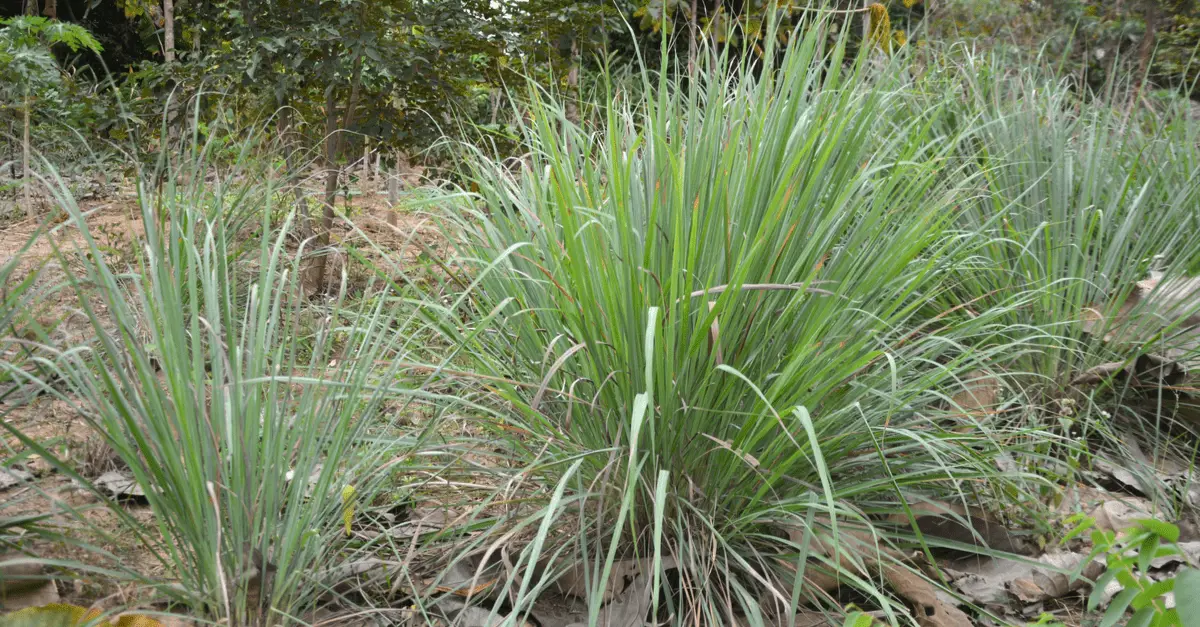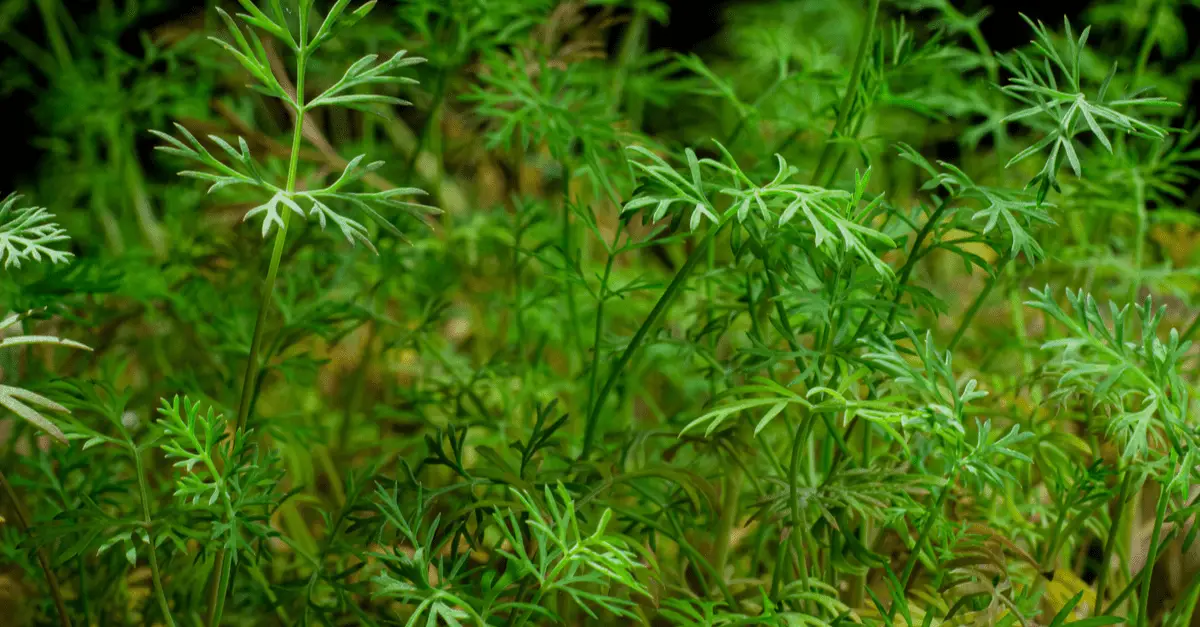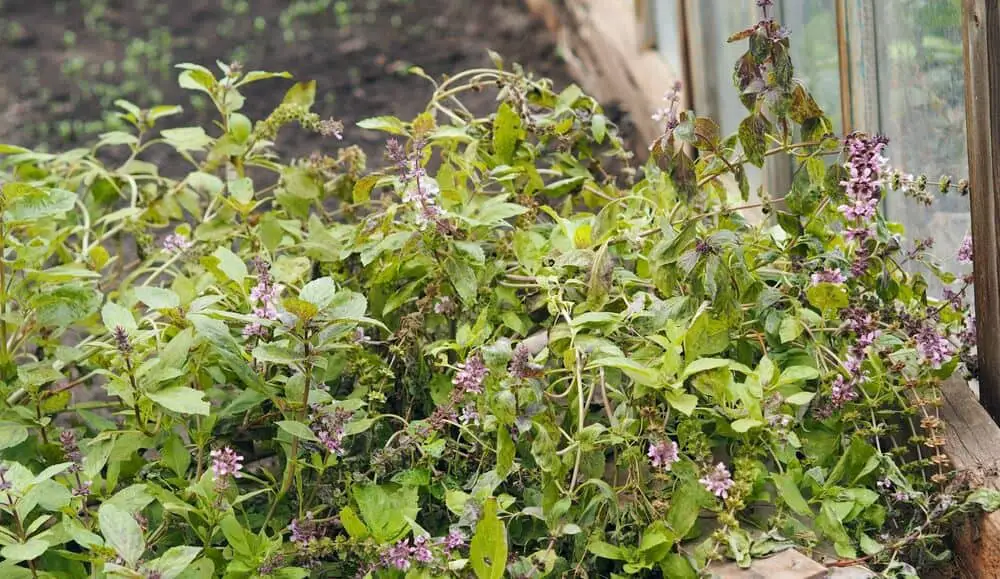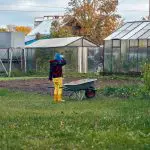Herbs form a variety of particularly aromatic plants. They add flavor and interest to the food we eat and have many health benefits, with many used in ancient times before the era of modern medicine.
You can buy herbs at most grocery stores, but many are actually really easy to grow.
They add color to your garden, are perfect for pollinators, and some are also heroes at keeping unwanted pests at bay.
Here are the top 14 must-have herbs to grow in your garden.
1. Basil

Basil is a no-fuss herb to grow. It’s packed to the brim with goodness, is known to support digestion, and has anti-inflammatory properties.
It’s also excellent at deterring mosquitoes and houseflies. Place it on a sunny windowsill or a hot spot in the garden for a perfectly happy plant.
Basil works perfectly in many dishes, including pizza, with tomato-based sauces, soups, and salads.
2. Chives

Chives are well known for their tall grass-like structure and round purple heads, which bees adore.
Chives have a mild, spicy, onion-like taste that works superbly in salads, sauces, and soups.
Chives are more than happy in pots or on the ground but come autumn, the remaining flowers will wither and disperse hundreds of seeds, so containers are better if you’d prefer the plant not to spread too far.
3. Parsley

Parsley is used in many dishes and is an excellent addition to your garden.
It’s not a particularly showy plant, but it will grow plumes of delicate white flowers if left uncut.
Parsley is a great companion to crops such as tomatoes, carrots, and corn, keeping away pests such as aphids.
This is because parsley attracts hoverflies whose larvae love to eat them.
Parsley will regrow with more vigor the more you cut. It is even hardy to cold weather, including snow.
4. Thyme

As long as your thyme plant is in full sunshine and does not meet late spring frosts, it will do perfectly well and won’t need maintenance.
It’s happy in the ground and pots and works well in fractured walls and cracked paving slabs.
Thyme is known for its disinfectant properties.
Use thyme to combat skin complaints, such as acne, and also assists in lowering blood pressure.
5. Rosemary

Rosemary is a hardy perennial often used in cooking, complementing meat well. It is also known for its particularly pungent smell.
Experts think that regular consumption of rosemary helps fight a range of bacterial, viral, and fungal ailments.
Due to its strong scent, rosemary is excellent at deterring carrot flies, mosquitoes, slugs, and snails for your veg patch.
It’s also known to keep rabbits from nibbling your crops.
6. Mint

Mint is the perfect accompaniment to many foods and drinks.
It brings a refreshing addition, so having it ready to go is excellent.
Mint is excellent at repelling flies, fleas, and spiders, and planting it next to many crops, such as cabbage, beets, and broccoli, will help their health and improve flavor.
The downside to mint is that it is a particularly voracious grower and will soon take over if placed directly in the ground, with roots that spread far and wide.
The best option for mint is in a patio pot or a pot within the soil.
7. Lavender

Lovely lavender with unmistakable perfect flowers that bees love.
Unlike most herbs, lavender is used more in products than as an accompaniment to food.
It has calming properties that assist sleep and help combat anxiety.
In the right conditions, lavender is a low-maintenance perennial that will replenish its shoots for around five years.
It is also fantastic at keeping away moths, flies, and mosquitoes.
8. Sage

Sage is an easy-to-grow, hardy plant that will keep its flavor throughout the summer season.
Sage is also slightly different from most other herbaceous plants in that it is evergreen and will maintain structure and color throughout the year.
Sage works well in stews, stuffings, and soups, but it is also grown for its beauty.
During summer seasons, sage boasts its tall, deep purple flowers.
As well as containing vitamins C and A, sage’s medicinal properties also include vitamin K, which experts have linked with the prevention of blood clots.
9. Lemongrass

Lemongrass is an impressive plant. It can grow tremendously with great bushy leaves and has a specific citrus flavor in perfect conditions.
Native to Asia, it is happiest with plenty of sunshine, and it is most commonly associated with Asian cooking, but you can add it to curries, sauces, salads, and tea.
It is even more appealing that mosquitoes detest the citronella that lemongrass contains.
10. Bay

Unlike most other herbs, bay leaves come from a slow-growing tree, instead of a small plant or shrub, with some growing as tall as 23ft, although you can easily control it by careful pruning.
Bay trees are mostly hardy and can withstand temperatures that dip below freezing, although if you’re growing in a pot, it’s worth bringing them indoors during cold snaps.
11. Cilantro

Some people love it, and others hate it, but either way, cilantro is a herb that appears in many recipes and perfectly suits salsas, salads, and stir-fries.
It’s a cut-and-come-again kind of herb; the more you cut, the more it will regrow.
It is annual, which means it’ll only last for one year; however, if you let it go to flower, the seeds will fall and wait until the following year’s warmth before regrowing.
12. Dill

The unusual soft and feathery appearance of dill contrasts with the tangy anise flavor.
Dill prefers to be outside in the full sun.
It’s not keen on being handled or transferred, so it’s best to grow from seed by popping them straight into the ground.
Dill has fantastic medicinal properties. Because it contains flavonoids, dill can reduce the chances of suffering a stroke or heart disease. It can also reduce high cholesterol.
13. Ginger

The jury is still out on whether ginger is a herb, a spice, or a vegetable; however, it’s such a unique and beneficial plant you can’t ignore it.
Unlike all other herbs, the part of ginger we eat is the root.
The easiest way to grow ginger is to buy a stump from the grocery store, soak it in water overnight, cut it into 2” pieces and bury it in the ground.
Leave it for around eight months to fully mature, and you’ll have your own stock of fresh ginger.
14. Oregano

Oregano is a herb known for its strong scent, and it complements tomato-based Mediterranean meals perfectly.
To keep its fragrant power, add oregano towards the end of cooking.
Oregano has oodles of goodness, with a long list of vitamins and minerals to its name, and it also possesses antibacterial properties.
Even better, it’s super simple to grow. Place some seeds into a container, and you’ll have mature oregano in around 45 days.






